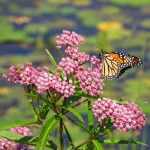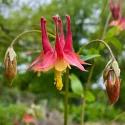Highlights
Bee Balm, monarda, wild bergamot, Oswego Tea—no matter what common name you use, these native flowers are easy to grow and easy to love. All these flowers belong to the Monarda genus, which only includes fifteen species (alongside hundreds of cultivars.) The crazy shape of Bee Balm’s flowers makes them perfect for pollinators—especially hummingbirds. Heights vary (depending on the species) from 2-5 feet. Bee Balm thrives in sun to part sun, making them excellent choices for beginner gardeners. Explore planting tips and varieties below.
All species of Bee Balm are pollinator favorites
Dig Deeper
Explore the history, types, and where to plant native Bee Balm
Table of Contents
Why plant Bee Balm?
Native plants—like Bee Balm—are excellent for our gardens for three reasons:
- Native plants are the food and habitat that birds, butterflies, and pollinators depend on to survive
- Native plants let you be a lazy gardener! (All they need is rain once they are established), and…
- Native plants are beautiful (wander through our native plant library for proof!)
Now that we know the benefits of planting Bee Balm, let’s dig into its background alongside tips for planting.
The many names of Bee Balm
While The Plant Native is calling these plants by one of their common names (Bee Balm) all types of Bee Balm have a Latin name that starts with Monarda. (Learn more about Latin vs. common names in this quick Latin name overview.)
The Latin name Monarda comes from a 16th-century Spanish doctor and botanist called Nicolas Monardes. Many North American native flowers have Latin names that refer to 16th and 17th-century European scholars and aristocrats (Magnolia and Rudbeckia—aka Black-Eyed Susans—are others.)
Besides Monarda and Bee Balm, these plants have lots of other common names, too, including Oswego Tea or Bergamot. All these names for a single plant can make it confusing if you’re looking for a specific species—and this naming confusion is why singular Latin names were invented.
If you want to be super clear about what plant you’re looking for, it is always best to look for the Latin name. If you see Monarda on the plant tag, you know you’re looking at this plant.
Bee Balm is related to mint!
All species of Bee Balm are in the mint family (Lamiaceae). This is also why all Monardas smell lovely—a little minty, a little herby. You’ll smell their fresh minty-ness as the breeze passes by, and especially when you cut their flowers for a bouquet or arrangement.
Types of native Bee Balm
There are around fifteen plants within the Monarda genus that go by the name “Bee Balm.” Here are some of the easiest to find from different parts of North America:
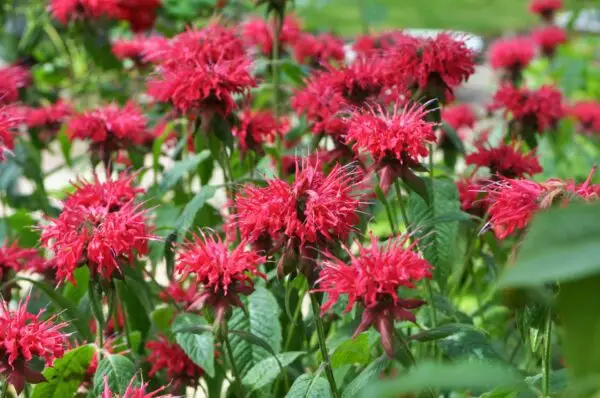
Scarlet Bee Balm
This classic red-flowered Bee Balm is native to the Northeast. It can be tall—up to 4 feet at its happiest. This is a hummingbird magnet! June to early August bloom-time.
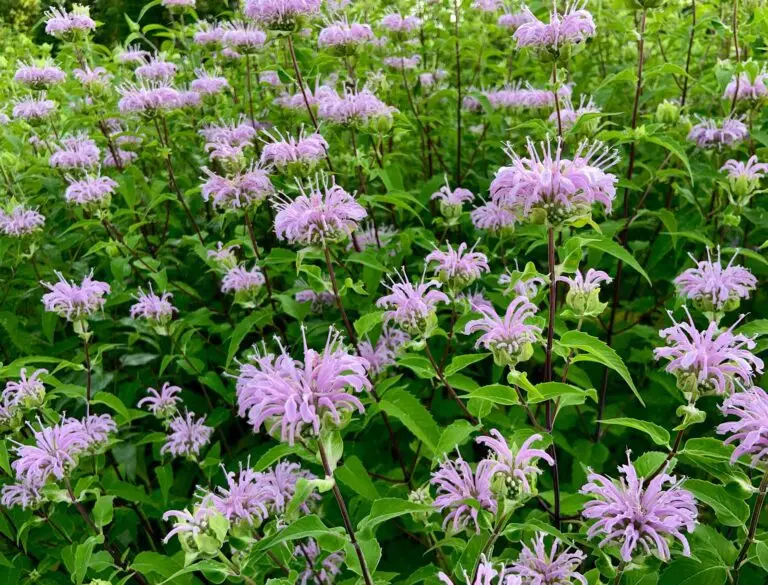
Bee Balm / Wild Bergamot
This gorgeous light purple Bee Balm is native to the prairies of the Midwest. It has a lovely smell that is similar to oregano. This is a very resilient, easy-to-grow plant—the Michigan Department of Transportation often plants it along the highways. 3-5 feet tall, June and July bloom-time.
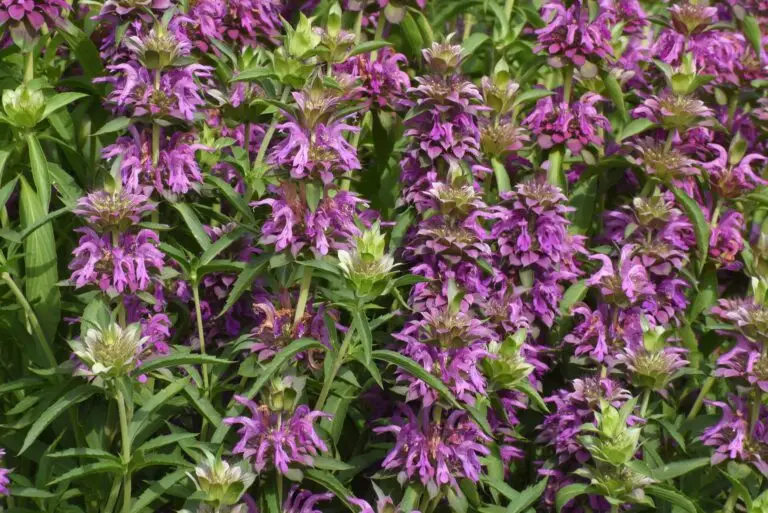
Lemon Bee Balm
This annual Bee Balm (it will reseed itself, or need to be reseeded every year after a frost) has a wonderful lemony scent. Its flowers have multiple tiered levels of amazingness. 2-3 feet tall.
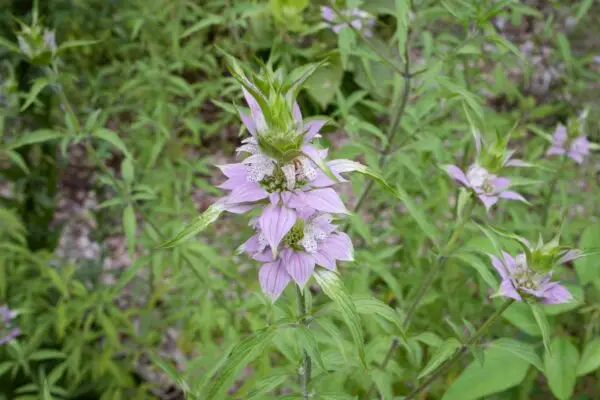
Spotted Bee Balm / Horsemint
Monarda punctata
This is our favorite Bee Balm: its flowers are tiger-like in their spotted beauty. They smell heavenly in the garden, like a cross between mint and oregano. Depending on where Spotted Bee Balm is planted, it will be an annual (meaning it will only last one season) or a short-lived perennial (coming back for a year or two.) It does not like water-logged soils. 2-3 feet tall.
Added bonus: Bee Balm is deer-proof
Deer do NOT eat Bee Balm! If you’re worried about deer nibbling your garden, planting species of Bee Balm is good native gardening choice.
Cultivar Bee Balms
There are also hundreds of cultivar varieties of Bee Balm. Cultivars are plants that have been created by humans to look or behave a certain way. Cultivars offer a wide range of drought tolerance, colors, and heights, but they can confuse pollinators (who might not recognize them!) or even have fewer nutrients than their true native cousins.
Cultivars offer fun shapes and colors, but whenever possible—plant true natives.
Some cultivar Bee Balms you may find include:
- Peter’s Purple Bee Balm, which has a showier, brighter purple bloom
- Raspberry Wine Bee Balm, has a darker red hue
- Bee You Happy Bee Balm is cultivated to be shorter than native versions, so it works well as a border plant
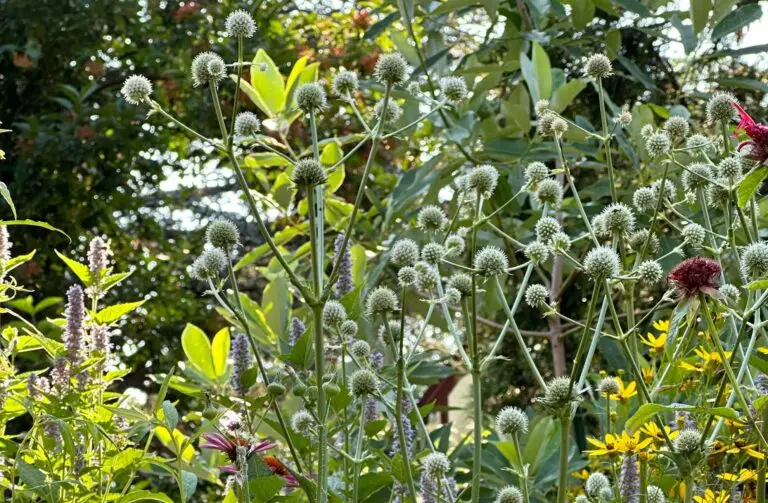
Where should I plant Bee Balm?
Bee Balm is perfect for sunny or part-sunny pollinator gardens. Many Bee Balm species get tall—2-4 feet! Be sure to put shorter native flowers (like Coreopsis) in front of it. Pairing it with other tall flowers—like Rattlesnake Master and Hummingbird Mint—gives lots of look at during the summer.
Does Bee Balm like sun or shade?
Bee Balm thrives in full sun to part sun. Full shade is the only sun option that won’t work well for Bee Balm. Bee Balm is a great native plant for beginning native gardens since it is happy in many types of light and soil.
What type of soil does Bee Balm like?
Bee Balm grows well in soil that’s somewhat moist to average. (Basically, as long as it’s not super dry or water-logged, it will thrive.)
How to grow Bee Balm
Bee Balm is a very easy plant to grow from either seed or plant.
Grow Bee Balm from seeds
It is SO EASY to plant Bee Balm from seeds. (Remember—native plants plant themselves.) To plant Bee Balm, mimic the way they plant themselves:
- Sprinkle Bee Balm seeds in pots or directly into the garden in the fall or early spring
- Cover them very lightly with dirt—just a light cover is enough!
- Water during any dry spells, otherwise the rain should be enough
- Wait for the seedlings to emerge as springtime temperatures get in the average 60s
- Thin out seedlings (by directly pulling them up) if they are too close to one another
- That’s it! Enjoy!
Grow Bee Balm from plants
Good news: you can often find Bee Balm for free. Check local Facebook gardening groups—oftentimes, gardeners give away Bee Balm (yes, for free!) in the spring, to help them have space to thrive. Once you’ve got some Bee Balm plants:
- Choose a location with well-draining soil that receives at least six hours of direct sunlight per day. (Bee Balm prefers full sun to partial shade, and soil that is too wet can cause root rot.)
- Select the appropriate species of Bee Balm for your region (see above!)
- Prepare the soil by removing weeds and adding organic matter like compost. This will help to improve soil health and drainage.
- Plant the Bee Balm by digging a hole twice the width of the container it came in, placing the plant in the hole, and filling it in with soil.
- Water the plant deeply and regularly, especially during the first growing season.
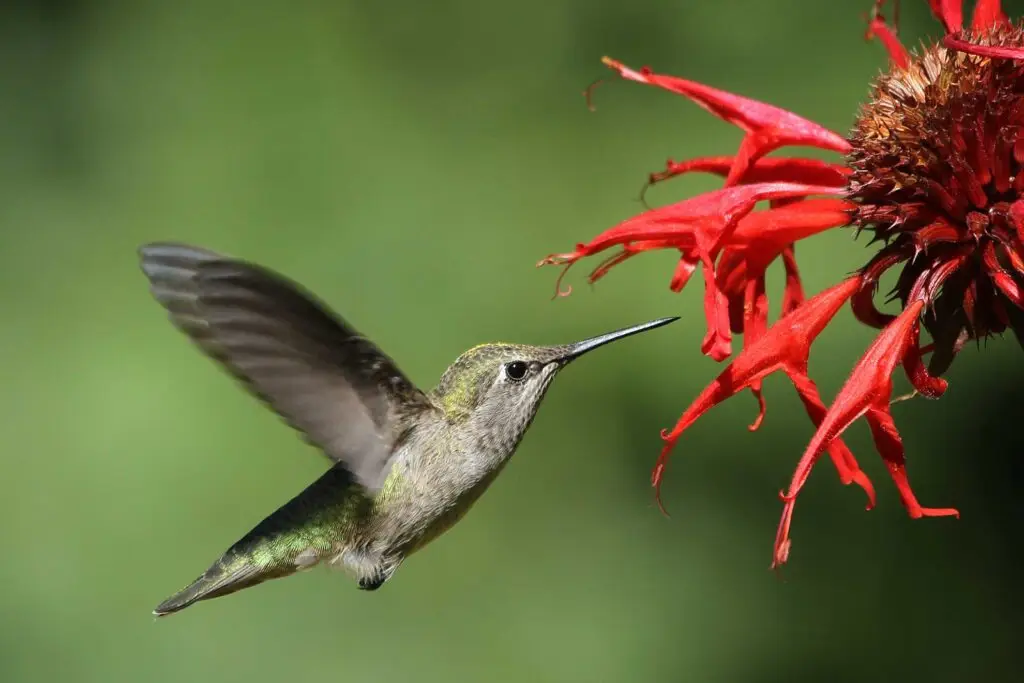
No pesticides or herbicides
Avoid using pesticides or herbicides near Bee Balm plants, as they can harm the butterflies, hummingbirds, and pollinators that visit the flowers.
Having trouble finding the Bee Balm species you want? Here are some recommendations for sourcing native plants like Bee Balm:
Where can I find seeds and plants?
Finding native plants can be challenging (we partly blame Marie Antoinette.) To make it easier, we’ve assembled four sourcing ideas.
Native Plant Nurseries
Our list of native nurseries makes finding one a breeze
Online Native Plant Sellers
We've included 100+ online resources to help
Society Plant Sales
Every state has a native plant society; find yours
Online Communities
Local Facebook groups are a great plant source
Why does my Bee Balm have white spots?
Sometimes, especially at the end of the summer, Bee Balm can get white splotches or a white covering over its leaves. This is actually mold, and it tells you that the plant needs more air circulation (basically, it’s crowded.) Dig up the plants near it to give it more air, and voila, the mold issue will be solved.
What to plant with Bee Balm
Pair Bee Balm with other flowering native plants that flower throughout the seasons to create a pollinator party.
Native flowers for the spring
other native flowers for the summer
Native flowers for the fall
Planting native Bee Balm is an easy way to have a gorgeous garden with way less work than a lawn. Bee Balms attract movie star pollinators like hummingbirds and butterflies and are happy in a variety of sun and soil situations. While planting native Bee Balm varieties is always best for wildlife, cultivar Bee Balms offer a wide range of heights and colors. Why not start a Bee Balm collection, and plant a few varieties? Happy planting!
Sources
- Lady Bird Johnson Wildflower Center, Wild Bergamot
- Lady Bird Johnson Wildflower Center, Lemon Bee Balm
- Lady Bird Johnson Wildflower Center, Scarlet Bee Balm
- Lady Bird Johnson Wildflower Center, Spotted Bee Balm
- Johnson, Lorraine. 100 Easy-to-Grow Native Plants for American Gardens in Temperate Zones. (1999), 20, 124.
- Lorimer, Uli. The Northeast Native Plant Primer. (2022), 161-162.
- Taylor, Patricia A. Easy Care Native Plants. (1996), 263-264.
- Craigmyle, Marshall. “The Illustrated Encyclopedia of Perennials.” (2002), 193-194.
